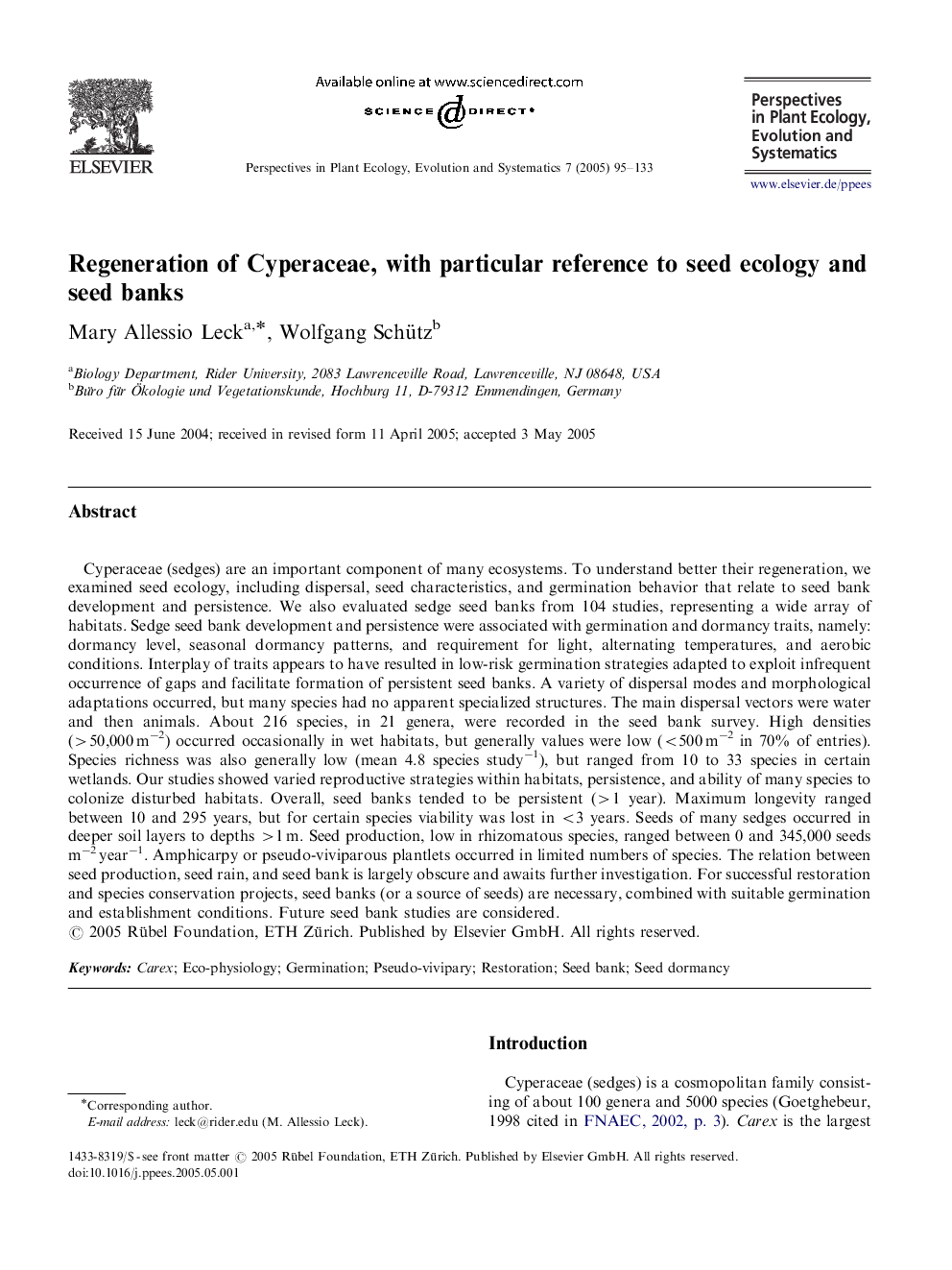| کد مقاله | کد نشریه | سال انتشار | مقاله انگلیسی | نسخه تمام متن |
|---|---|---|---|---|
| 9450830 | 1307077 | 2005 | 39 صفحه PDF | دانلود رایگان |
عنوان انگلیسی مقاله ISI
Regeneration of Cyperaceae, with particular reference to seed ecology and seed banks
دانلود مقاله + سفارش ترجمه
دانلود مقاله ISI انگلیسی
رایگان برای ایرانیان
کلمات کلیدی
موضوعات مرتبط
علوم زیستی و بیوفناوری
علوم کشاورزی و بیولوژیک
بوم شناسی، تکامل، رفتار و سامانه شناسی
پیش نمایش صفحه اول مقاله

چکیده انگلیسی
Cyperaceae (sedges) are an important component of many ecosystems. To understand better their regeneration, we examined seed ecology, including dispersal, seed characteristics, and germination behavior that relate to seed bank development and persistence. We also evaluated sedge seed banks from 104 studies, representing a wide array of habitats. Sedge seed bank development and persistence were associated with germination and dormancy traits, namely: dormancy level, seasonal dormancy patterns, and requirement for light, alternating temperatures, and aerobic conditions. Interplay of traits appears to have resulted in low-risk germination strategies adapted to exploit infrequent occurrence of gaps and facilitate formation of persistent seed banks. A variety of dispersal modes and morphological adaptations occurred, but many species had no apparent specialized structures. The main dispersal vectors were water and then animals. About 216 species, in 21 genera, were recorded in the seed bank survey. High densities (>50,000Â mâ2) occurred occasionally in wet habitats, but generally values were low (<500Â mâ2 in 70% of entries). Species richness was also generally low (mean 4.8 species studyâ1), but ranged from 10 to 33 species in certain wetlands. Our studies showed varied reproductive strategies within habitats, persistence, and ability of many species to colonize disturbed habitats. Overall, seed banks tended to be persistent (>1 year). Maximum longevity ranged between 10 and 295 years, but for certain species viability was lost in <3 years. Seeds of many sedges occurred in deeper soil layers to depths >1Â m. Seed production, low in rhizomatous species, ranged between 0 and 345,000 seeds mâ2Â yearâ1. Amphicarpy or pseudo-viviparous plantlets occurred in limited numbers of species. The relation between seed production, seed rain, and seed bank is largely obscure and awaits further investigation. For successful restoration and species conservation projects, seed banks (or a source of seeds) are necessary, combined with suitable germination and establishment conditions. Future seed bank studies are considered.
ناشر
Database: Elsevier - ScienceDirect (ساینس دایرکت)
Journal: Perspectives in Plant Ecology, Evolution and Systematics - Volume 7, Issue 2, 23 August 2005, Pages 95-133
Journal: Perspectives in Plant Ecology, Evolution and Systematics - Volume 7, Issue 2, 23 August 2005, Pages 95-133
نویسندگان
Mary Allessio Leck, Wolfgang Schütz,